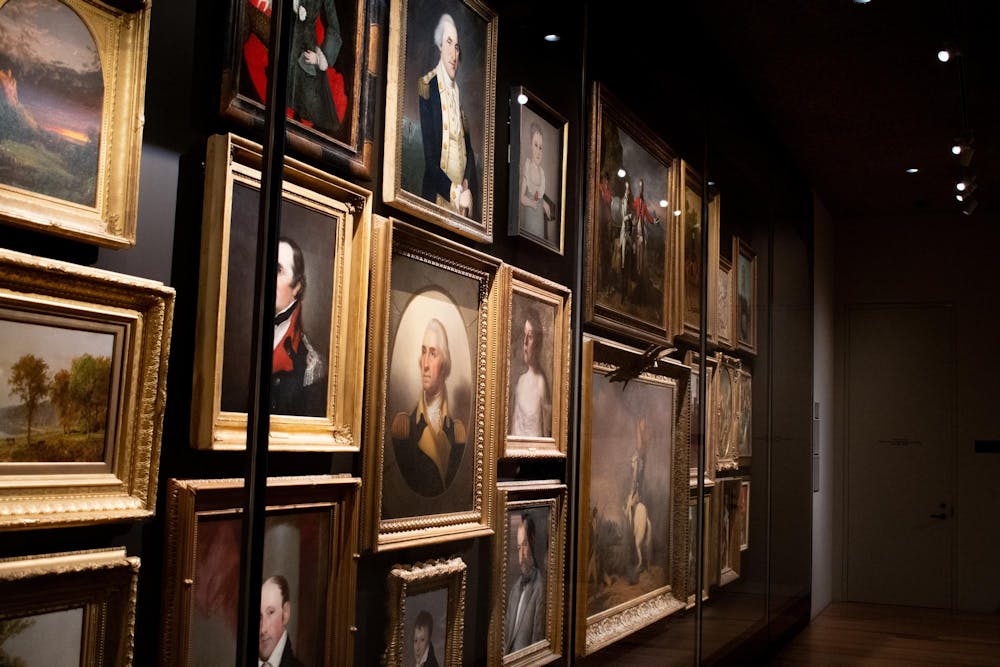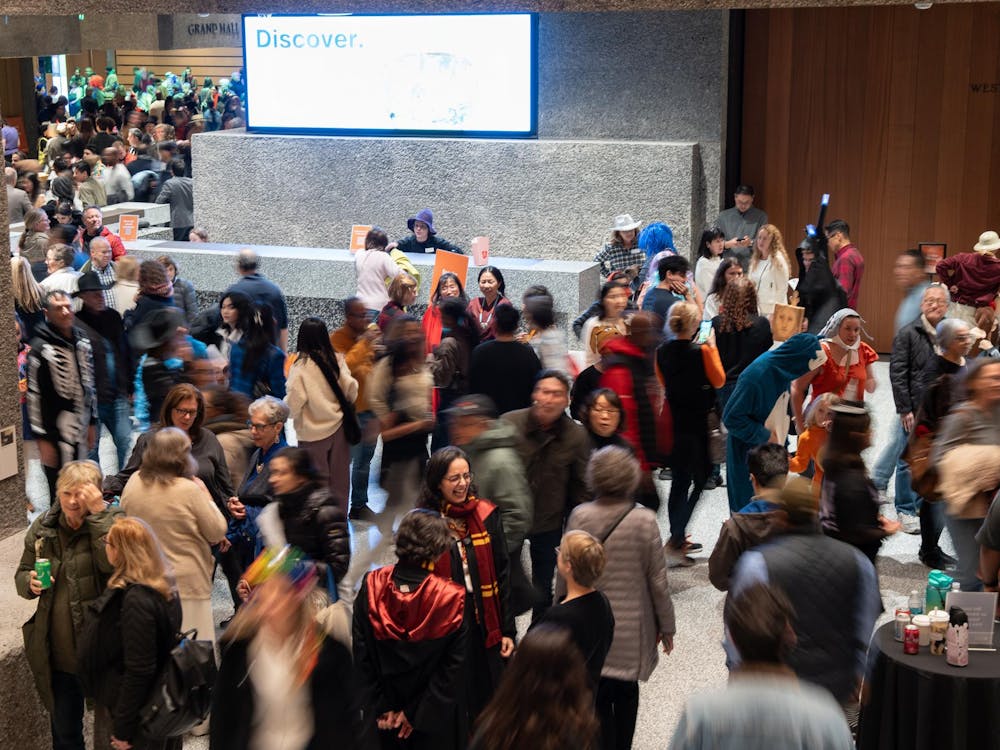After nearly five years of renovations, the Princeton University Art Museum has reopened, showcasing more than 3,000 pieces from a collection of over 50,000. Featuring household names like Monet and Warhol alongside works from more obscure or even unidentified artists, the data reveals a varied curation across over 500 artists and 1,000 distinct artistic mediums in Princeton’s newly renewed public art experience.
The Daily Princetonian analyzed trends from the art museum collections database, focusing on the 3,241 artworks currently on display out of 58,348 total in the database.
Where the data was consistently formatted, the ‘Prince’ used simple text-analysis machine learning (ML) techniques — word tokenization (breaking text into words or phrases) and clustering (grouping similar items based on shared features) — to organize the mediums and dates of works into broader categories.
The art museum opened to the public on Halloween, drawing more than 20,000 visitors over a 24-hour opening event.
Artists
The ‘Prince’ first looked at a breakdown of credited artists on display at the art museum. Any art piece in the collections database whose artist description mentioned “unknown”, “attributed”, “unrecorded”, or “unidentified” were removed for this analysis.
There are 514 credited artists with works on display, 14 of which have more than four works on display.
The artist with the most works on display is Eleanor Antin, mostly as part of a project called 100 Boots, which documents the staged travels of 100 pairs of black rubber boots. The project consists of 51 postcards of the boots photographed in a cross-country journey.
The ‘Prince’ used the Bosworth Art score, a modification of the Bosworth score, to analyze how well-known artists are based on Google Trends data. The score compares an artist’s number of monthly searches to Toshiko Takaezu, former Princeton art professor and creator of “Dialogues in Clay,” the welcome exhibit to the museum.
Andy Warhol, Claude Monet, and Benjamin West hold the top three Bosworth Art scores, averaging roughly 84, 80, and 78 respectively for 2024. This means that each of these artists were searched about 80 times more often than Takaezu.

By this metric, seven of the fifteen most recognizable artists are painters and four are photographers or print artists.
Mediums
The original dataset from the art museum’s collection search included 1,084 different art mediums. To make these easier to study, the ‘Prince’ used a machine learning technique called k-means clustering to group similar mediums into broader categories to analyze.
The original 1,084 medium entries were grouped into 40 broader categories, chosen using common data science methods to capture meaningful differences between mediums while keeping the categories simple enough to interpret.
More than 240 works were categorized as either “black-figure” or general ceramics. Roughly one-quarter of these originated from Greek or Classical Greek culture, many representing black-figure pieces, which are bowls and vases decorated with ornamental motifs along the sides.
Almost 99 percent of oil paintings, the second most frequently used medium, were not given a cultural label.
Cultures
There are 252 unique cultures on display at the art museum. Almost two thirds of works with labeled cultures had either East Asian, Mesoamerican, or Greek and Roman origins. 1,543 works had no culture label, usually indicating modern or contemporary art.
Image Analysis
The Museum’s dataset contained 2,384 unique images. For each, the “dominant color” was found by averaging RGB (Red, Green, Blue) values across all pixels. k-means clustering was used to group these works into eight groups, with each sharing similar color profiles.
Most of the works on display at the museum have muted color tones on average. About two thirds of all works have some shade of gray or beige as their average color — categorized into clusters representing the colors stone gray, ash brown, beige gray, and light sand. Golden tan, a smaller group of 253 works, has a yellow/gold average color, representing many of the images of clay sculptures. The smallest group, slate blue, is a blue-gray color and contains many of the more colorful and modern works on display at the museum.
The ‘Prince’ also analyzed the relative brightness, saturation, and vibrance of works using HSV (Hue, Saturation, Value) codes. This was broken down by the ten most frequent cultural clusters, identified using k-means clustering.
Most of the artistic cultural groups had similar brightness levels, with Roman works falling below the average by 5.3 percent and works in the Greek (other) category having 7.1 percent higher brightness levels than average.
Olmec art, recognized for its stone sculptures and expressive human features, shows a 36.5 percent higher saturation than average. Etruscan art, known for its terracotta sculptures and ornate pottery, has a 15.3 percent higher saturation than average. In contrast, Japanese works, Egyptian works, and Non-Attic Greek works register about 10 percent lower saturation scores, suggesting subtler or more restrained palettes.
Differences in vibrance values are more moderate, with Chinese, Roman, Japanese, Maya, Nasca, and Olmec artwork being close to average in value. Notably, Etruscan works have a vibrance value 17.5 percent higher than average, while Egyptian works have a value about 10 percent lower than average.
The reopening marks an invitation to examine only a snippet of Princeton’s collections. By the numbers, the museum’s collection is vast and complex, hailing from many time periods and regions throughout human history.
All visitors are able to visit the Princeton University Art Museum’s collection of over 3,000 works for no cost.
Vincent Etherton is a head Data editor for the ‘Prince.’
Aayush Mitra is a contributing Data writer for the ‘Prince.’
Please send any corrections to corrections[at]dailyprincetonian.com.








